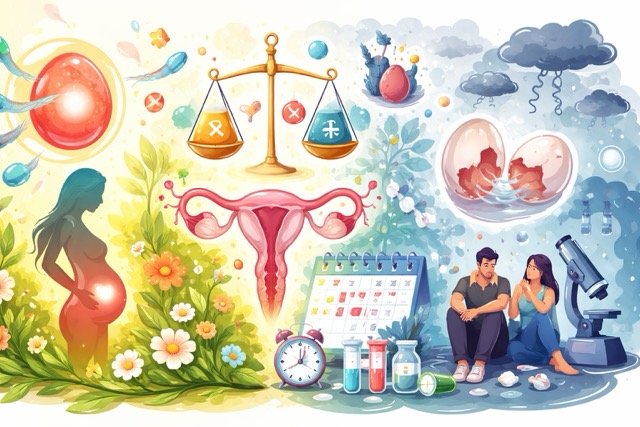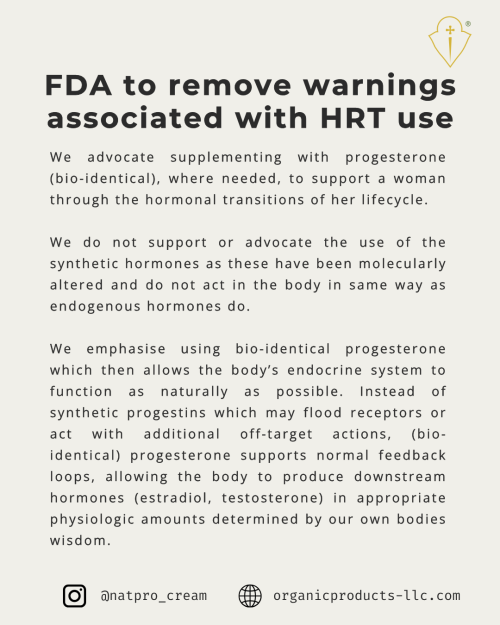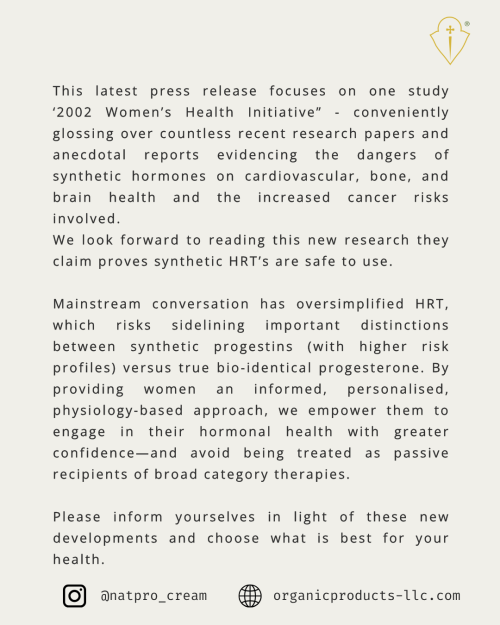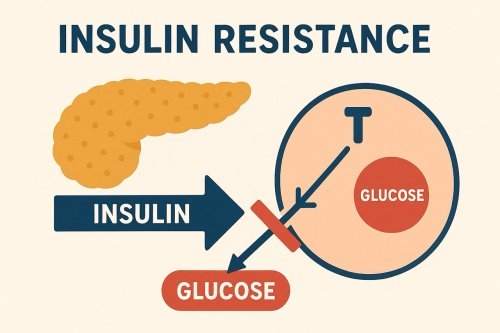Energy Boost formula
Please note, we are not producing the Energy Boost formula at present, but you can use the information provided on this page to give you a detailed description of the supplements, their actions and relevance as well as a gauge of what, and how much of each supplement to take.
The idea behind the Energy Boost formula is to reverse insulin resistance and help with...
- tiredness
- lack of energy
- foggy brain
- cravings
- weight gain
The supplements listed below in one way or another all play a role in achieving this, but unless sugar and foods which convert to glucose are eliminated from the diet and toxins from the environment are avoided, it will make little impact. I.e... eat organic food, drink filtered water, breathe clean air and avoid toxic body care and household products.
Many of the supplements have additional benefits, such as...
- aiding the immune system
- detoxifying the body
- anti-inflammation
- lower cholesterol and triglycerides
- improve cognition
- calming and relaxing effect
...and more. See full details below.
The full dose should be taken in the morning, although some find less is sufficient. The dose can be divided if preferred.
Do not take on an empty stomach if sensitive to the B vitamins and zinc. If a night shift is worked, take the complex before starting work.
Please see here for information on Insulin Resistance.
|
Nutrient Arginine Carnitine (N-acetyl) Glutamine Glycine Taurine Tyrosine Chromium picolinate Selenium amino acid chelate Zinc amino acid chelate Vitamin B1 (thiamine) Vitamin B2 (riboflavin) Vitamin B3 (niacinamide) Vitamin B5 (Ca D-pantothenate) Vitamin B6 (pyridoxine) Vitamin B12 (cyanocobalamin) Vitamin C (L-ascorbic acid) Biotin Choline Folic acid Inositol Vitamin D3 (cholecalciferol) Alpha lipoic acid CoQ10 D-Ribose Milk thistle (81.79% silymarins) Purified phyllosilicate clay TOTAL |
Amount per serving 500mg 500mg 4000mg 500mg 1000mg 500mg 500mcg 200mcg 15mg 25mg 25mg 25mg 100mg 25mg 200mcg 500mg 2000mcg 100mg 800mcg 4000mg 5000 IU 100mg 50mg 300mg 515mg 500mg 413.9g |
The key to understanding the effectivenes of the Energy Boost formula is the unique balance of the many individual ingredients which have been formulated to maximise their synergistic results.
Here is a detailed description of all the ingredients in the Energy Boost formula...
Amino Acids
Arginine
Assists in glucose metabolism, insulin production and growth hormone. Detoxes the liver, boosts the immune system, retards the growth of tumours and cancer, has been found to be low in people with cancer. Assists in wound healing, increases muscle mass, decreases body fat, an anti-inflammatory. Has a positive affect on viability of sperm, lowers cholesterol, aids in angina, congestive heart failure, erectile dysfunction, interstitial cystitis, speeds recovery time after surgery, might improve senile dementia, hypertension and migraine.
Caution: if herpes is a problem do not take..
Carnitine (N-acetyl)
Vital for the production of energy in the mitochondria found within each cell. Its most important function is to transport fat, including fatty acids like omega 3, into the mitochondria of muscle cells, including the heart, for oxidation. The end result is energy. Together with ALA (alpha lipoic acid), it promotes mitochondrial synthesis and adipocyte (fat cell) metabolism, thus helping in insulin resistance and diabetes. Prevents fatty build-up, especially in the heart, liver, and muscles, by lowering blood triglyceride levels. Aids in weight loss, increases muscle mass, helps in hypothyroidism, increases physical and cognitive activity, reduces fatigue and improves cognition, by promoting acetylcholine release. Used by athletes for improved endurance, recent research finds it might improve the body's use of glucose. Effective in increasing sperm motility, may increase testosterone production and improve testicular function, does not cause prostate enlargement, decreases with age.
Glutamine
Builds and maintains muscles, where it is found in large amounts, so used frequently by dieters and body builders. If blood sugar drops too low it can be used in place of glucose, as it can readily pass the blood brain barrier. Because of this, it stabilises blood sugar, eliminating cravings for sweets, starches and alcohol in as little as 48 hours. It helps with mental function, principal fuel for the immune system and digestive tract, preventing leaky gut, heals the lining, including ulcers. During stress large amounts of glutamine are lost, leading to loss of muscle, of great importance in trauma and surgery. A precursor to glutathione.
Glycine
Retards muscle degeneration by supplying creatine, improves glycogen storage, having the proper amount increases energy, repairs skin and connective tissue, helps epilepsy, relaxes muscles, calming, is one of the precursors of glutathione. Like glutamine can be used in place of glucose for energy.
Taurine
It is needed for the digestion of fats and controlling cholesterol levels, as it is an integral part of bile. Useful for hypoglycaemia, oedema, high blood pressure, epilepsy, heart disorders (high concentrations are found in the heart), has a protective and soothing affect on the brain. Essential for assisting magnesium, calcium, potassium and sodium to enter cells, a lack can cause a drop in potassium levels in the heart, may be the reason for muscle cramps, and not a lack of minerals. Associated with zinc metabolism, a shortage of both may lead to impaired vision. Helpful in alcoholism and diabetes.
Caution: if you have very low blood pressure.
Tyrosine
Although a non-essential amino acid, tyrosine is one of the most important. It's the precursor to the neurotransmitter dopamine, and the stress hormones adrenaline and noradrenaline. It's also the precursor to the two thyroid hormones T3 (triiodothyronine) and T4 (thyroxine), plus melanin, the pigment found in hair and skin. It's part of the enkephalin peptide involved in regulating and reducing pain, and increasing pleasure. Lack of protein and stress lower tyrosine levels, with a subsequent reduction in dopamine. A drop in dopamine increases levels of prolactin, the hormone of lactogenesis, but also an inflammatory hormone. Dopamine is essential for a normal sexual response, increased prolactin causes a drop in libido. Tyrosine is essential for any stressful situation, cold, fatigue, emotional trauma, prolonged work, sleep deprivation, it improves memory, cognition and physical performance, and is used for weight loss treatments. ADD patients have significantly lower levels of tyrosine, phenylalanine, tryptophan, histidine and isoleucine. Acute, uncontrollable stress depletes dopamine, leading to depression and a rise in cortisol, tyrosine reverses this. The rate limiting step in dopamine synthesis is the enzyme tyrosine hydroxylase. Insufficient levels of vitamin D inhibit tyrosine hydroxylase, resulting in a disturbance in the dopamine pathway. This is essential for motivation and vitality, levels rise when rewarded, resulting in feelings of pleasure. A lack of tyrosine can lead to addictions to tobacco, alcohol, marijuana, cocaine, heroin and glucose. These substances raise dopamine levels. Tyrosine is used effectively for substance abuse.
Minerals
Chromium (picolinate)
Needed for the metabolism of glucose, cholesterol, fats and protein, it therefore helps to increase muscle mass and reduce fat stores. It is crucial in maintaining a stable blood sugar level. High amounts of sugar in the diet cause a loss from the body. Needed during pregnancy as the developing foetus has a high requirement for it.
Selenium AAC ('amino acid chelate')
A vital antioxidant, prevents the oxidation of fats, the formation of free radicals, and some tumours. A deficiency has been linked to cancer, heart disease and autoimmune thyroiditis. Plays a major role in the synthesis of thyroid hormones, needed for the conversion of T4 into T3, there is more selenium in the thyroid than any other organ. Helps prevent infections, liver and pancreas impairment and sterility.
Zinc AAC
The second most abundant trace mineral in the body, zinc is a constituent of insulin, making it extremely important for blood sugar control. It is also found in many enzymes, including superoxide dismutase, a powerful antioxidant and liver protector. It is vital for a healthy immune system and is required for protein synthesis and collagen formation. Deficiencies can lead to acne, bulimia and anorexia, lack of taste and smell, abnormal appetite, dementia, lethargy, retarded growth and sexual development, high cholesterol levels, impotence and infertility, recurrent colds and flu. It is especially important for teenagers to get sufficient for normal reproductive growth. It is a vital part, together with vitamin B6, in the conversion of homocysteine into glutathione.
Vitamins
B1 (thiamine)
Assists in blood sugar regulation, acts as an antioxidant, protects from stress. A diet high in sugars and coffee deplete it. Needed for production of hydrochloric acid, digestion and carbohydrate metabolism. Deficiency symptoms include cognitive impairment, fatigue, loss of appetite and weight.
B2 (riboflavin)
Aids in metabolizing fats, carbohydrates and protein. Needed for cellular metabolism, red blood cell formation and the conversion of tryptophan into niacin (B3), for detoxifying and reducing homocysteine levels. Deficiency symptoms include sores at corners of mouth, eye problems, inflammation in the mouth, cognitive impairment, light sensitivity, poor digestion, dermatitis, insomnia.
B3 (nicotinamide)
Needed for metabolism of carbohydrates, fats and proteins, aids in depression, fatigue, low blood sugar, muscular weakness, helps oxygenate the brain. Only the niacin form of B3 will reduce cholesterol, but due to the flushing niacin causes, many cannot tolerate it. Niacin is converted to nicotinamide in the body. Nicotinamide is involved in oxidation-reduction reactions, principally as a component of the two most important coenzymes, nicotinamide adenine dinucleotide and nicotinamide adenine dinucleotide phosphate.
B5 (Ca D-pantothenate)
The anti-stress vitamin, vital for healthy adrenal glands, helps in the conversion of fats, carbohydrates and proteins into energy. Involved in removing excess cholesterol and triglycerides in the blood.
B6 (pyrodoxine)
Affects both mental and physical health, needed for the synthesis of RNA and DNA, the production of hydrochloric acid, the absorption of fats and protein, the normal functioning of the brain, for cellular metabolism, for the conversion of amino acids into neurotransmitters, for detoxifying and reducing homocysteine levels by turning it into the powerful antioxidant glutathione.
B12 (cyano-cobalamin)
The only B vitamin not found in fruit and vegetables, also the only B vitamin to need 'intrinsic factor', which is produced in the cells that line the stomach, before it can be absorbed. So anyone with low stomach acid or a damaged stomach is likely to be deficient in it. It is needed for the metabolism of carbohydrates and fats, required for proper digestion, for the growth and development of all cells, especially nerve cells, prevents anaemia. It assists in memory and enhances sleep patterns. Needed for detoxifying and reducing homocysteine levels.
Vitamin C (L-ascorbic acid)
A powerful antioxidant, acting as a protector against diseases associated with oxidative stress. Ascorbic acid is necessary for the synthesis of collagen, carnatine and neurotransmitters in the body. It is a vital factor in maintaining the health of the skin, bone, blood vessels, cartilage & teeth. Vitamin C boosts the immune system, there is a high percentage of it found in the immune cells. It protects against heavy metal poisoning.
Biotin
Aids in the metabolism of fats, protein and carbohydrates, in fact research has found that it can stabilize blood sugar and eliminate cravings for carbohydrates, in some instances better than chromium. Reduces high blood sugar, needed for fatty acid production, for healthy hair, skin, nerve tissue and bone marrow. A deficiency can cause anaemia, depression, insomnia. But of great importance it has been found that a deficiency in biotin can cause the yeast candida albicans to convert into its aggressive fungal form, causing it to spread throughout the body.
Choline bitartrate
It aids in hormone production, transmission of nerve impulses, gallbladder regulation, liver function and lecithin production. Prevents fatty build up in the liver as it aids in the metabolism of fat and cholesterol. Beneficial for brain function and memory. A deficiency may result in high blood pressure, liver and kidney impairment, difficulty in digesting fats, arteriosclerosis, dementia, Alzheimer's and high homocysteine levels.
Folic acid
Beneficial for energy production, depression, anxiety, the brain and red blood cell formation. Strengthens immunity and is vital for pregnancy, preventing neural tube defects such as spina bifida. Above all the B vitamins it is the one most effective in combating high homocysteine levels. As it is found chiefly in green leafy vegetables, which feature low in most diets, many people are deficient in it.
Inositol
Increases the action of insulin and decreases insulin resistance. It has a calming affect, helps in combating depression, panic attacks, mood swings, obsessive-compulsive disorder, bipolar disorder and anxiety. Helps reduce cholesterol levels, hardening of the arteries, removes fat from the liver. Improves ovulation, decreases serum androgen concentrations, blood pressure, and plasma triglyceride concentrations in polycystic ovary syndrome. Weight loss has been observed in patients taking it. High losses occur in diabetes, used for diabetic neuropathy, insomnia, cancer, hair growth (known as the anti-alopecia vitamin).
Vitamin D (cholecalciferol)
A fat soluble vitamin, principally synthesised on the skin by the action of UVB sunlight on cholesterol. A low level is associated with impaired insulin secretion, insulin resistance, metabolic syndrome, hyperglycaemia, decreased beta cell function in the pancreas and increased renin-angiotensin expression. Plays a role in insulin sensitivity. Exposure to the sun and dietary supplements are associated with a reduced risk of type 1 and 2 diabetes and glucose intolerance. A deficiency is also associated with muscle weakness, osteoarthritis, chronic pain, depression, fibromyalgia, autoimmune diseases such as lupus erythematosus, rheumatoid arthritis, and inflammatory bowel disease, plus osteomalacia, some cancers, psoriasis, photosensitivity, osteoarthritis, multiple sclerosis, hypertension, stroke, autism, heart disease, birth defects and more.
It is essential for maintaining normal calcium metabolism, low levels result in hyperparathyroidism, which leads to insulin resistance. The darker the skin the more sun exposure is required to obtain sufficient. The following list gives an indication of levels of vitamin D found in the blood. The test should only be done for 25-hydroxyvitamin D also called calcidiol:
- Sufficient - 50-100ng/mL or 124.80-249.60nmol/L
- Hypovitaminosis - less than 30ng/ml or 75 nmol/L
- Deficiency - less than 25ng/L or 62.4nmol/L
For more information please see the Grassroots Health website.
Additional ingredients
Alpha lipoic acid
A powerful sulphur containing, water and fat soluble antioxidant and coenzyme that is involved in glucose metabolism and production of adenosine triphosphate (ATP) within the mitochondria. It needs vitamins B1, B2, B3 and B5 to do this. It readily crosses the blood-brain barrier. Together with carnitine, it promotes mitochondrial synthesis and adipocyte (fat cell) metabolism, thus helping in insulin resistance, diabetes, obesity, weight reduction and lowering high cholesterol levels. Enhances heart, artery, immune and brain functions, used for peripheral neuropathy, retinopathy, cataracts, and glaucoma. Improves insulin sensitivity and glucose disposal in type 2 diabetes, some evidence shows a decrease in cognitive decline. Recycles vitamins C, E, and glutathione. Protects lipids from oxidation, suppresses superoxide, protects against inflammation, radiation damage, chelates toxic metals, particularly mercury. Levels decrease with age.
CoQ10
A major fat soluble antioxidant and catalyst in the mitochondria, helping to oxidise fat and glucose to produce energy (ATP), needed by all cells to function. Highest amount found in organs that require large amounts of energy, the liver, kidney, pancreas, immune system, but particularly the heart. Lowers total cholesterol levels, prevents LDL cholesterol from oxidation, raises HDL, vitamin E and C levels, dramatically improves chronic fatigue syndrome and helps with muscular dystrophy and myopathy. Lowers high blood pressure, both systolic and diastolic, shows promise for angina, beneficial for congestive heart failure and decreases the risk of heart attacks. Boosts the immune system, has anti cancer properties, protects against radiation and chemotherapy, helpful for migraines. Research indicates it works synergistically with carnitine and there is some evidence statins reduce levels. It decreases with age.
D-Ribose
A carbohydrate, a pentose sugar essential to every living cell, as it's a building block of adenosine triphosphate (ATP). ATP is the energy that drives the cell, where glucose is converted first into ribose and then into ATP. Works synergistically with creatine (obtained from glycine) and CoQ10. If insulin resistance is present, glucose cannot enter the cell, ribose levels drop, which in turn drops ATP, with a subsequent drop in energy levels. D-ribose supplements overcome this problem. It builds lean muscle mass, benefits athletes, heart disease, congestive heart failure, angina, fibromyalgia (ATP levels are low), chronic fatigue syndrome, any condition where lack of oxygen is a problem. Reduces muscle cramps and soreness, restores energy after exercise, boosts the immune system. The backbone of RNA and DNA is made from ribose.
Milk thistle
The liver is the main detoxifying organ in the body, under constant threat from toxins in the environment, quite apart from the normal metabolism of the body. Recent research has shown that the centuries old remedy, milk thistle, is a great help to the liver and gallbladder in removing toxins from the body. There appears to be evidence it assists the kidneys and pancreas too. It reduces insulin resistance, lowers fasting glucose, glycosylated haemoglobin, total cholesterol, LDL cholesterol and triglyceride levels in diabetics. It can inhibit the spread of cancer cells in the liver and cause apoptosis. There is some evidence it has anti-inflammatory and immune boosting properties due to it's antioxidant activity, thereby inhibiting tumor necrosis factor and lipid peroxidation. It has been shown to significantly increase glutathione, ascorbic acid and superoxide dismustase levels, thereby preventing oxidative stress.
Phyllosilicate clay
Mycotoxins are toxins produced by fungi of which aflatoxin is the most virulent. They have been found in samples taken from grains, legumes such as peanuts, nuts, spices like nutmeg, cheese and other milk products, dried fruit, chewing tobacco, detannin-caffeinated coffee and black tea (caffeine and tannin have anti-aflatoxigenic properties). As a result they are eaten by humans or livestock, but are extremely resistant to gastric breakdown. Cooking or freezing does not destroy them. Mycotoxins are found in buildings too, although usually the level is too low to cause problems. Some of these are cancer, diarrhoea, damage to the nervous system and kidneys. Zearalenone is a potent estrogenic mycotoxin, it's heat-stable and found in maize, barley, oats, wheat, rice, sorghum and bread. Research has found by taking a phyllosilicate clay, the mycotoxins in the gut are adsorbed onto the surface of the clay and excreted. It does not adsorb nutrients because it is a non-expandable clay.
 If you are feeling confused or overwhelmed by fertility challenges, or wondering if hormone balance might be affecting your ability to conceive you are not alone—many women and couples face uncertaint…
If you are feeling confused or overwhelmed by fertility challenges, or wondering if hormone balance might be affecting your ability to conceive you are not alone—many women and couples face uncertaint…
 _____
_____ Feeling tired, foggy, or struggling with stubborn weight gain—especially around the waist? You might be surprised to learn that these symptoms could be linked to insulin resistance, a condition that a…
Feeling tired, foggy, or struggling with stubborn weight gain—especially around the waist? You might be surprised to learn that these symptoms could be linked to insulin resistance, a condition that a…